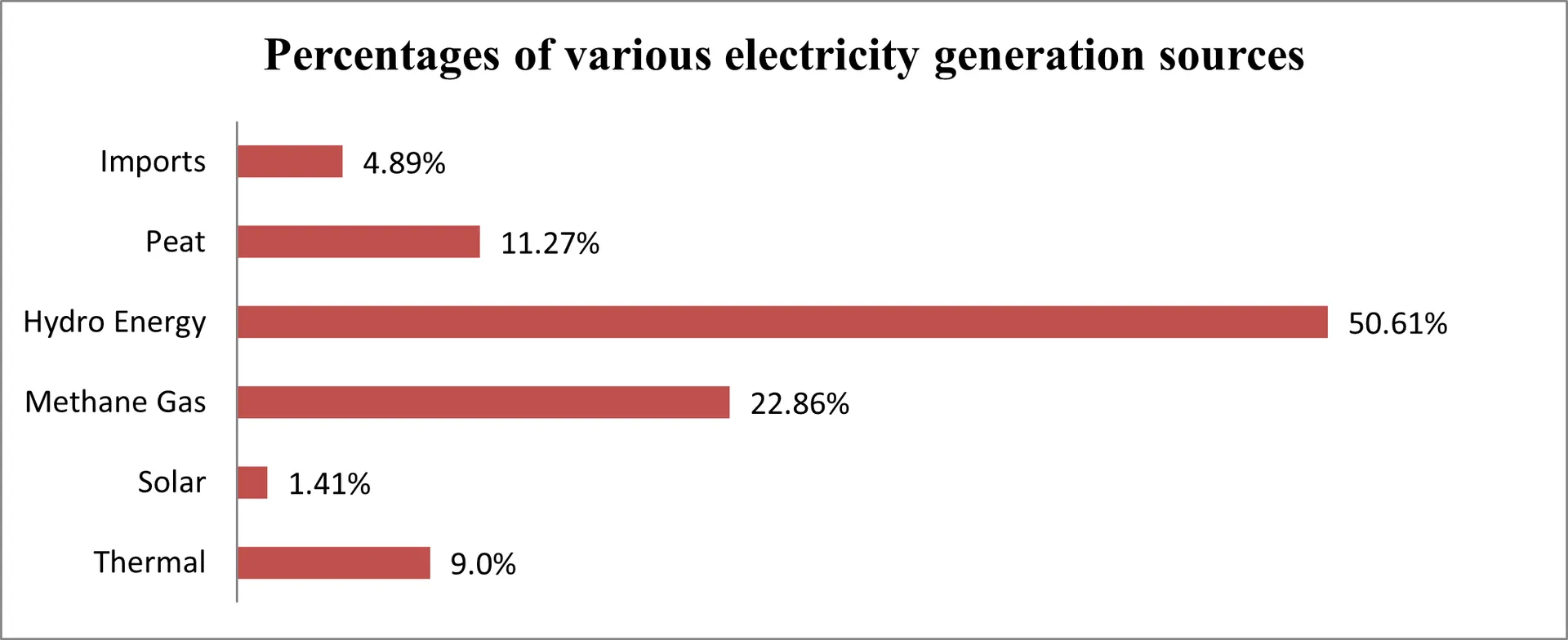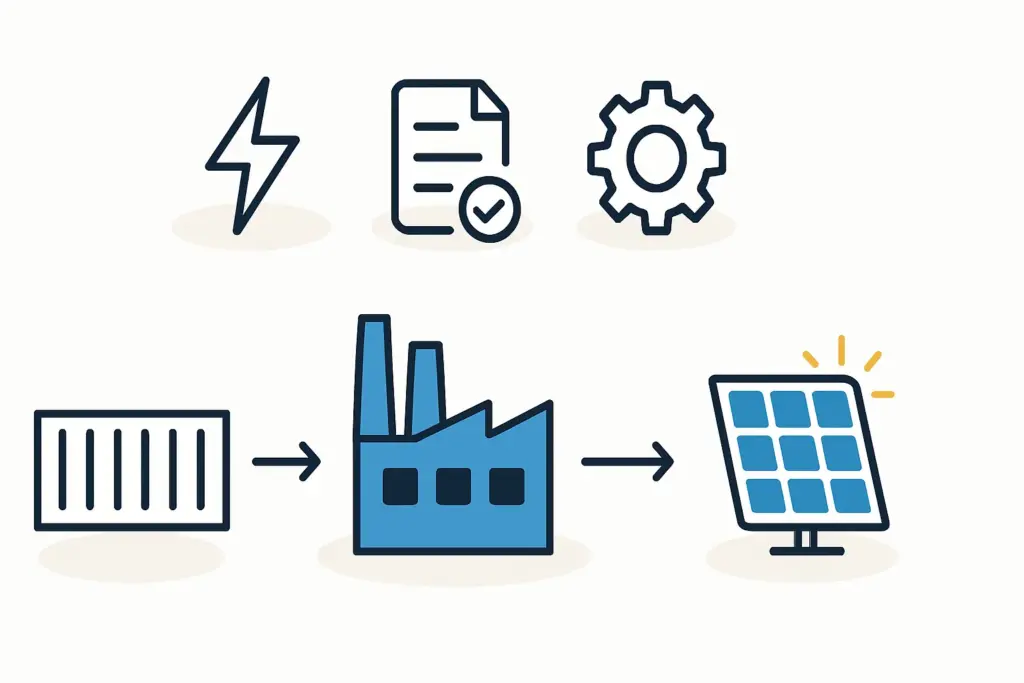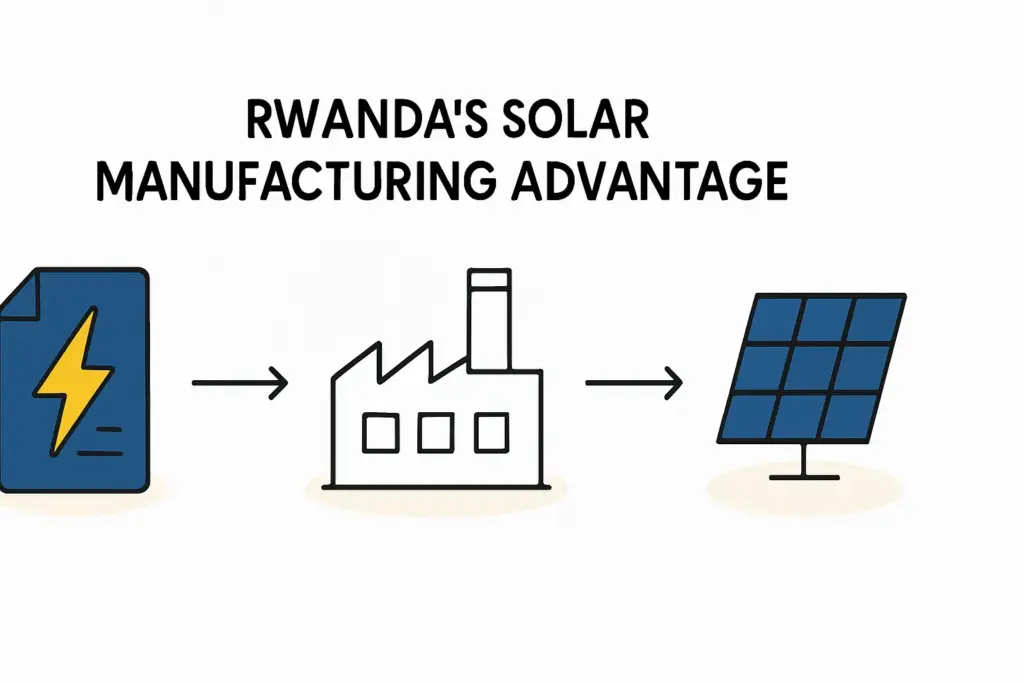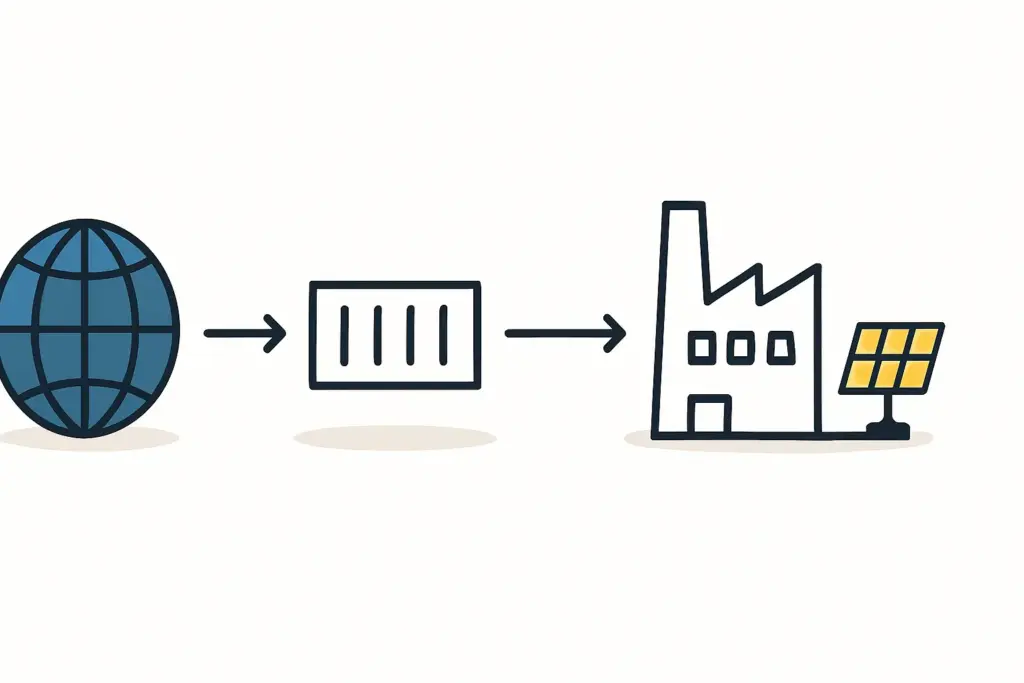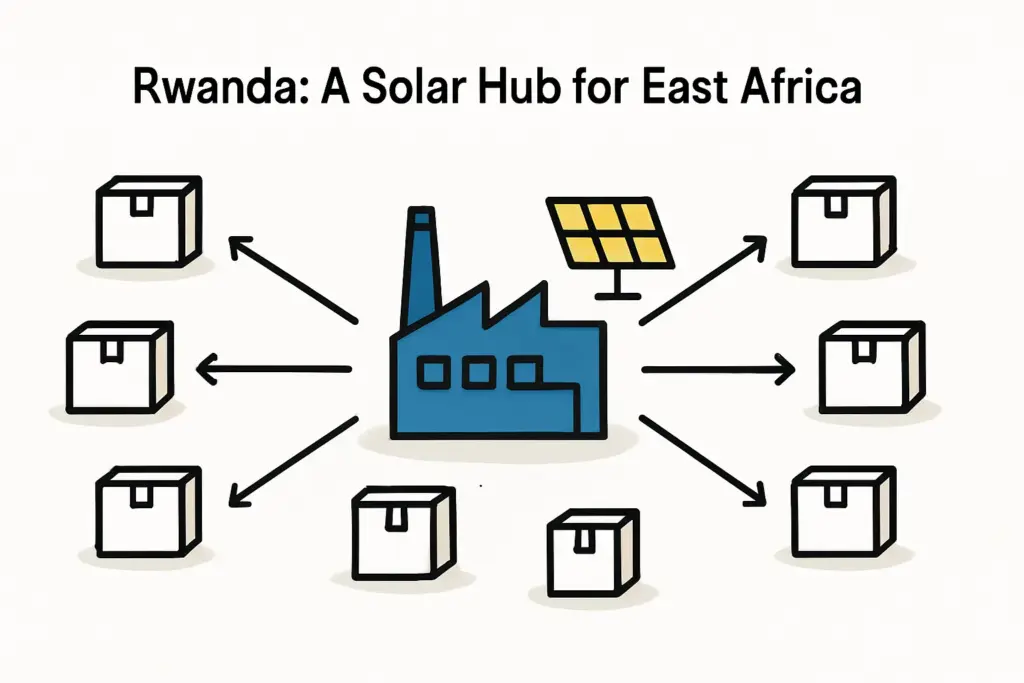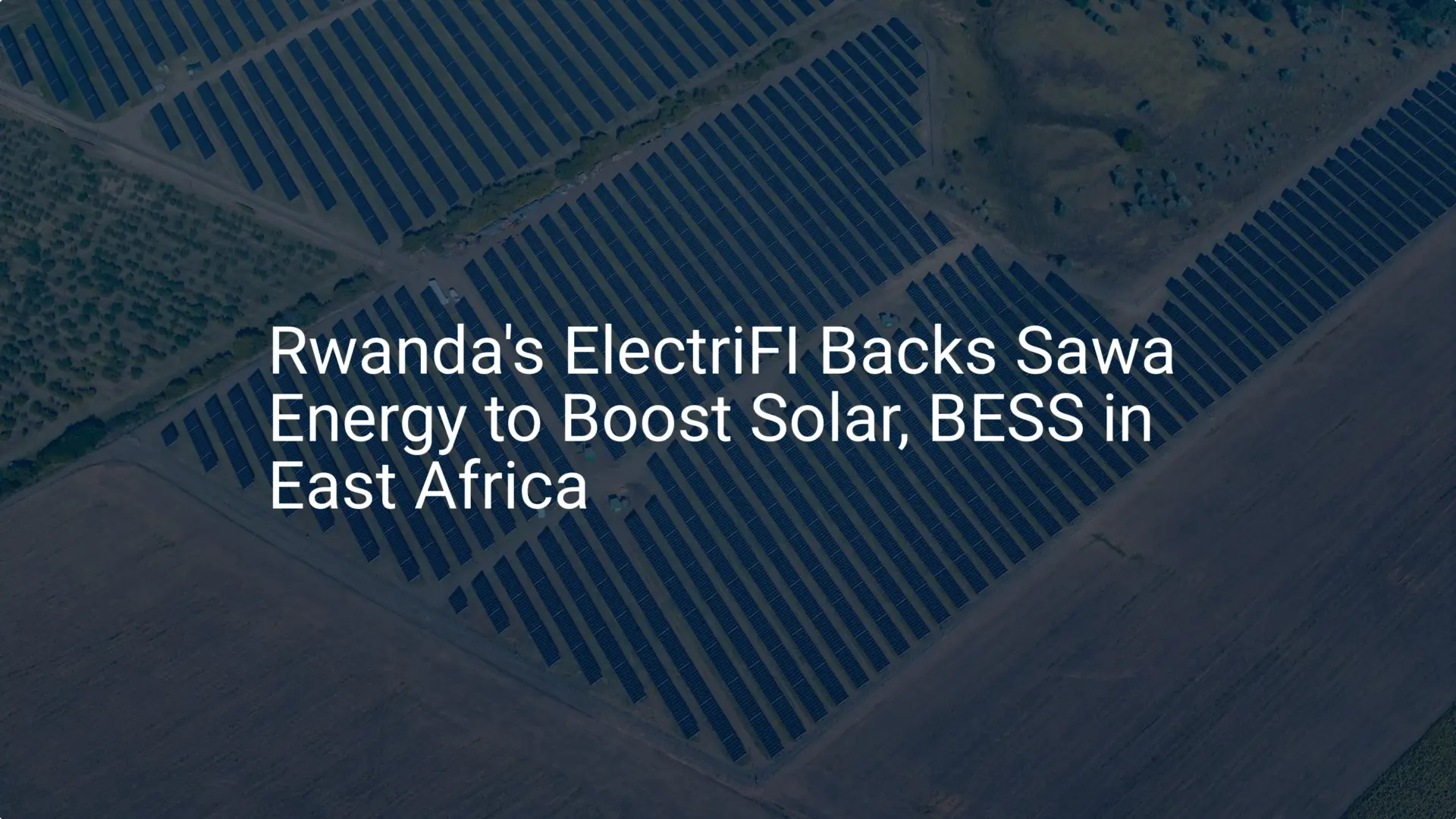Discover comprehensive insights into the statistics, market trends, and growth potential surrounding the solar panel manufacturing industry in Rwanda
- Climate top. (2024). Daylight hours in Kigali, Rwanda. Retrieved July 2, 2024, from https://www.climate.top/rwanda/sunlight/
- Profilesolar. (2024). Solar PV analysis of Rubavu, Rwanda – profileSOLAR.com. Retrieved July 2, 2024, from https://profilesolar.com/locations/Rwanda/Rubavu/#:~:text=In%20terms%20of%20electricity%20output,kW%20of%20installed%20solar%20power.
- Natravinda, F. (2023, March 27). Rwanda among countries with cheapest electricity tariffs – Report. AllAfrica. Retrieved July 2, 2024, from https://allafrica.com/stories/202303270035.html#:~:text=Rwanda’s%20average%20price%20of%20electricity,per%20kWh%20for%20large%20businesses.
- Rawanda Energy Group. Electricity access. Retrieved July 2, 2024, from https://www.reg.rw/what-we-do/access/
- Energy Private Developers. Total on-grid installed in Rwanda currently. Retrieved July 2, 2024, from https://epdrwanda.com/energy-sector/solar/#:~:text=Rwanda’s%20total%20on%2Dgrid%20installed,installed%20is%20currently%20238.052MW.
- Mininfra. (2019). Rwanda targets 60% of renewable resources by 2030, Permanent Secretary Uwase Patricie. Retrieved July 2, 2024, from https://www.mininfra.gov.rw/updates/news-details/rwanda-targets-60-of-renewable-resources-by-2030-permanent-secretary-uwase-patricie
- Van Der Plas, R. (2009). Target market analysis Rwanda’s micro-hydro energy market. Water Portal Rwanda. Retrieved July 2, 2024, from https://waterportal.rwb.rw/sites/default/files/inline-files/gtz2009-en-targetmarketanalysis-hydro-rwanda.pdf
- Rwanda Utilities Regulatory Authority (RURA). (2023). Electricity statistics report as of the second quarter (April – June) of the year 2023. Retrieved July 2, 2024, from https://rura.rw/fileadmin/Documents/Energy/Statistics/Electricity_Statistics_Report_as_of_the_Second_Quarter_2023.pdf
- Rawanda Energy Group (REG). Power outages. Retrieved July 2, 2024, from https://www.reg.rw/customer-service/power-outages/
- Rawanda Energy Group (REG). (2021). More than 72,000 households were provided with solar home systems. Retrieved July 2, 2024, from https://www.reg.rw/media-center/news-details/news/20202021-more-than-72000-households-were-provided-with-solar-home-systems/
- Rwanda Utilities Regulatory Authority (REG). (2024). Solar. Retrieved July 2, 2024, from https://www.reg.rw/what-we-do/generation/solar/
- Rwanda Utilities Regulatory Authority (REG). (2024). Projects to increase electricity generation capacity and access by 2024. Retrieved July 2, 2024, from https://www.reg.rw/media-center/news-details/news/projects-to-increase-electricity-generation-capacity-and-access-by-2024/
- Worldsalaries. (2024). How much does a solar energy installation manager make in Kigali? Retrieved July 2, 2024, from https://worldsalaries.com/average-solar-energy-installation-manager-salary-in-kigali/rwanda/
- Worldometer. (2024). Population of Rwanda. Retrieved July 2, 2024, from https://www.worldometers.info/world-population/rwanda-population/
- Vibe. (2023). Warehouse for rent in Special Economic Zone (SEZ). Retrieved July 2, 2024, from https://vibe.rw/property/warehouse-for-rent-in-special-economic-zone-sez/
- WASAC Group. (n.d.). Tariff and charges. Retrieved July 2, 2024, from https://www.wasac.rw/publications/tariffs-and-charges
- Murukali. (n.d.). Retrieved July 2, 2024, from https://murukali.com/en-weshipworldwide/collections/office
- Papeteri. (n.d.). Retrieved July 2, 2024, from https://papeteri.com/
- Vibe. (n.d.). Offices for rent in Kigali. Retrieved July 2, 2024, from https://vibe.rw/offices-for-rent-in-kigali/
- Rwanda Utilities Regulatory Authority (RURA). (2015). Solar photovoltaic regulations. Retrieved July 2, 2024, from https://www.rura.rw/fileadmin/docs/Draft_Solar_PV_Regulations_-_FOR_COMMENTS.pdf
- Ministry of Infrastructure. (2022). Approved ministerial guidelines on minimum standards requirements for solar home systems. Retrieved July 2, 2024, from https://www.reg.rw/fileadmin/user_upload/Approved_Ministerial_Guidelines_on_Minimum_standards_Requirements_for_Solar_Home_Systems.pdf
- FMO. (2014). FMO invests in first utility scale solar project in Rwanda. Retrieved July 2, 2024, from https://www.fmo.nl/news-detail/2f270d0a-3250-4a5c-b592-59fb37d576d6/fmo-invests-in-first-utility-scale-solar-project-in-rwanda
- GESTO. (n.d.). Rwanda signs deal for new solar plant in Kayonza. Retrieved July 2, 2024, from https://gestoenergy.com/rwanda-signs-deal-for-new-solar-plant-in-kayonza/






